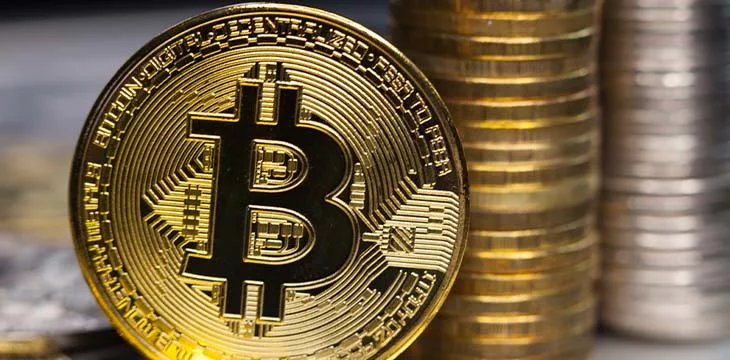How Bitcoin Transactions Compare to FedWire

Bitcoin can process an average of around 12,000 transactions per hour, or around 288,000 daily. The peak capacity is approximately seven transactions per second, or a maximum of 604,800 transactions per day. The value of these transactions consistently exceeds $1 billion daily, according to Blockchain.com.
In contrast, the payment network that processes the most money in the world, FedWire, makes approximately 811,000 transactions worth $3.9 trillion every day. Although FedWire does not operate 24/7, the US Federal Reserve has announced plans for a 24/7 payments service called FedNow for July 2023.
Read more: FedNow is coming next year, and the Feds hope it’s a crypto killer
Data blocks on Bitcoin’s ledger contain an average of 2,000 transactions. Miners reprocess blocks once every ten minutes. According to Blockchain.com, the average confirmation time ranges from 3.5 minutes to 13.2 minutes.
Miners will usually choose the transactions with the highest transaction fee per byte to include in the next block. Fees are based on how many bytes a transaction uses and how quickly the sender wants to send bitcoin rather than the “dollar value” of the transaction.
If the Bitcoin network is not very congested, someone can settle tens of millions of dollars in bitcoin within an hour for less than $1 in fees. This certainly beats the capability of FedWire today.
The Importance of Scaling Bitcoin Transactions for Daily Use
The growth of Bitcoin as a financial settlement layer is impressive, but more growth is needed to make it competitive with “mainstream” interbank settlement services such as FedWire.
A few years ago, SegWit effectively doubled Bitcoin’s computing power. Bitcoin’s previous block size limit of 1 MB increased to 4 million weight units (WU) which had the effect of doubling usable block space to approximately 2 MB if each transaction used SegWit.
Of course, the increase in block size did not completely prevent congestion. The mempool, which temporarily stores unconfirmed transactions, increased in size in 2013, 2017 and 2020. This increase in congestion had the side effect of increases transaction fees.
Some hope that Layer 2 or 3 solutions can help scale Bitcoin. These off-blockchain and pre-processing solutions only write data to the base (Layer 1) Bitcoin blockchain when needed.
Layer 2 scaling solutions ⏤ including Bitcoin’s most popular Layer 2, the Lightning Network ⏤ can bring Bitcoin closer to a peer-to-peer electronic cash system for daily transactions.
Through a Layer 2 solution like Lightning, Bitcoin holders who currently use the technology mostly as a store of value can switch to using it for everyday purchases when they can more easily buy coffee with it.
Many also hope for it changes in tax legislation can help increase the utility of Bitcoin; currently there is no de minimus tax exemption for Bitcoin transactions in most developed countries, so each and every transaction must be itemized and reported to the tax authorities.
Read more: Bitcoin developer has solution to Lightning’s existential problem – offline payments
Transaction fees key to long-term security
Bitcoin’s transaction fee market is important for combating certain types of mining attacks. Nodes can reject blocks that don’t follow consensus rules baked into Bitcoin’s code. However, miners can attempt variations of a majority hashrate attack (“51%) that injects blocks with empty or malicious transactions.
This form of attack competes with legitimate miners who pursue the incentive of transaction fees plus Bitcoin’s block reward subsidy to include transactions in blocks.
More decentralized than smaller digital assets
Bitcoin nodes and mining rigs are found all over the world. Over 10,000 Bitcoin full nodes are available on all six permanently inhabited continents. The US and Europe have the highest concentration of Bitcoin full nodes.
Less decentralized coins tend to have vulnerabilities that make them more vulnerable to attacks like the dreaded double spend. A fork of Bitcoin, Bitcoin Cash, suffered a double use attack which cost an exchange 12.4 million dollars July 17, 2022. The same thing happened earlier in May 2019, but Bitcoin Cash never fixed the problems that led to it ⏤ including failing to increase the hash rate dedicated to securing its alternative version of Bitcoin.
Bitcoin remains the most valuable blockchain in the world, with transaction settlements worth tens to hundreds of billions of dollars every month. While the dollar value is still a fraction of the amount that FedWire processes daily, it can compete with mainstream settlement options if it continues to scale through Layer 2 solutions.
For more informed news, follow us further Twitter and Google News or listen to our investigative podcast Newly created: Blockchain City.

























